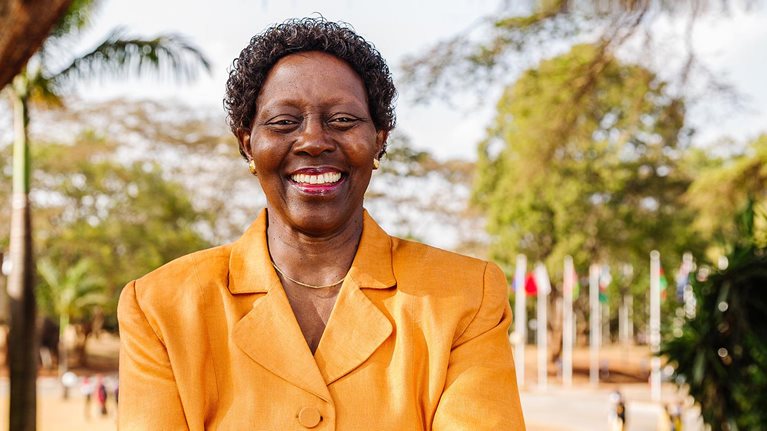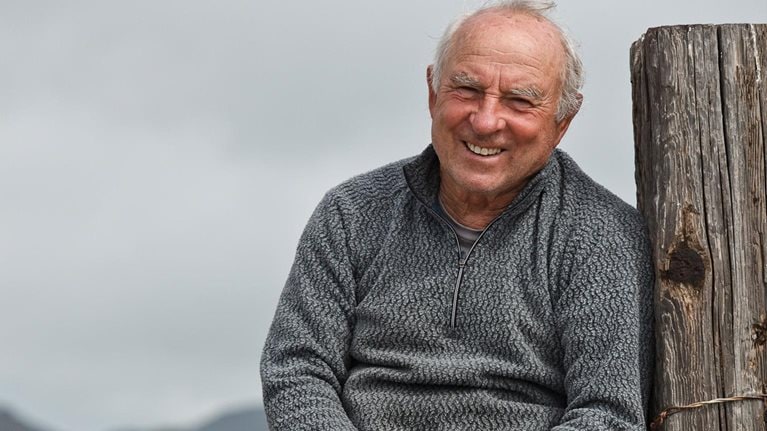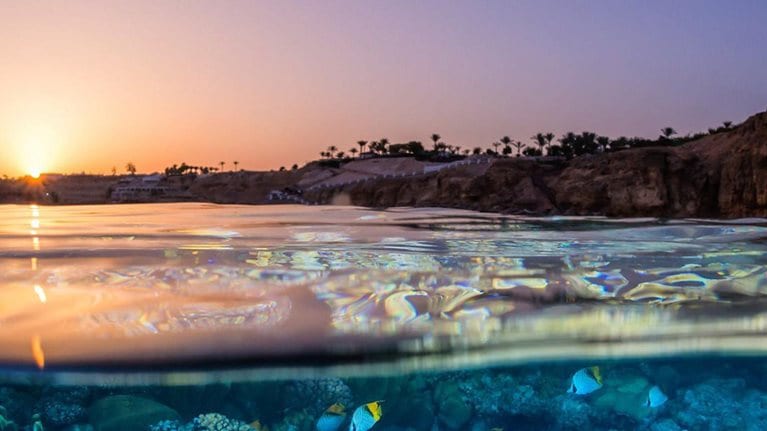Back in 2007, Dharsono Hartono ran into a friend, Rezal Kusumaatmadja, while attending a palm oil conference. Kusumaatmadja proposed they start a business together to help combat climate change in their homeland of Indonesia. For Hartono, who had recently returned to Indonesia after studying engineering and then working in the United States, the idea struck a chord. “We were just two young entrepreneurs looking to make a change, and we now manage one of the largest emission reduction and forest restoration projects of its kind in the world,” says Hartono.1
The friends founded PT Rimba Makmur Utama with the idea of using carbon financing to preserve and restore peatland ecosystems in Central Kalimantan. The region had been seriously damaged by fires since the early 1990s. PT Rimba Makmur Utama launched the Katingan Mentaya Project to deliver on these goals, including providing sustainable livelihoods to local communities. Today, the Katingan Mentaya Project manages 157,000 hectares of land, encompassing 35 villages. It issues approximately 7.5 million metric tons of emissions reductions per year, which is, by its own calculations, the equivalent of taking two million cars off the road.2
Hartono sat down with McKinsey partner Josh Katz to discuss the Katingan Mentaya Project, how it has evolved over time, what he’s learned about nature-based solutions, and why he’s optimistic about the future. An edited version of their conversation follows.
McKinsey: What challenges did you face in the early days of the Katingan Mentaya Project?
Dharsono Hartono: Initially, people said our idea was too crazy. It took us six years [from 2007 to 2013] to secure a concession license, which gave us the legal rights to manage the land. In the meantime, we were asking local villages to imagine a business—using carbon credits to protect the environment and produce a benefit for them—that didn’t yet exist; there was no precedent. But our good intentions were clear, and that helped us slowly build social capital, one town hall meeting at a time. From the start, we treated the community as our shareholders, not just stakeholders, with a focus on collaboration, transparency, and accountability. After securing the license in 2013, it took us another five years to get certified and verified to sell carbon credits. Throughout that decade, we received a lot of support from NGOs [nongovernmental organizations], the US Forest Service, the Japanese government, the scientific community, academia, and the financial sector, among others.
McKinsey: How has your thinking about nature and nature-based solutions changed throughout this experience?
Dharsono Hartono: My theory of change has shifted. We initially focused on protecting the environment, providing sustainable livelihoods for people, and creating carbon credits to show a business case. But even today, we still don’t know how to value nature assets. In the past, nature was abundant; now, it has suddenly become scarce, but we don’t know how to price it.
I’m challenging people to look at nature as an asset, but not through the old economic-model lens, which demands that an asset produce something that delivers return on equity or ROI. Instead, we can view nature as providing an essential environmental service, without which we wouldn’t survive another 100 or 200 years, and value it based on providing returns to humanity. The only way we can truly understand and value this asset is by taking a community-based approach, being transparent, using a scientific base, and working across all social dimensions.
Our intent is to save the forest and be a steward for carbon solutions. We are creating the conditions necessary for a more inclusive, restorative, and, ultimately, mutually enhancing economy.
Read more about Natural Capital and Nature
McKinsey: How has the Katingan Mentaya Project operating model evolved over time?
Dharsono Hartono: We initially invested to help local communities of farmers and fishermen adopt sustainable methods while also boosting productivity. But in the past few years, we have shifted away from using carbon financing to support existing industries to innovating and introducing new industries. For example, ponds support peatland conservation and restoration because they keep the forest wet. But in one small community of about 115 households, rather than using ponds to farm fish for food, the villagers are now raising snakehead fish for their albumin, a protein used by pharmaceutical companies for wound healing. Snakehead fish naturally create high amounts of albumin compared to other animals. Creating high-quality albumin in powder form makes good economic sense and has a positive impact on this community, although it’s not without its challenges. Because this area has no electricity and is prone to flooding, we had to invest in solar panels and install them ten or 15 feet off the ground.
Importantly, we worked within the community from the very beginning, laying out all the options, showing the potential, and letting them decide on the solution. It took almost two years to get their buy-in. We can’t dictate from Jakarta or go into these communities and push some utopian model from the Western world. We really need to understand their perspectives because they’re the ones who will own and run the solution. We now have more than 200 people who visit local communities to learn their perspectives, identify appropriate interventions, help them believe they can act on them, and then let them decide.
With the Katingan Mentaya Project, our business model makes it feasible for businesses, individuals, and communities to be part of the solution, not the problem. Everything that we do is united in the spirit of an ecosystem.
From the start, we treated the community as our shareholders, not just stakeholders, with a focus on collaboration, transparency, and accountability.
McKinsey: Wealthier countries provide a lot of the funding for these efforts but still tend to raise concerns about the associated risks. What have you done to ensure risks are identified and alleviated and bring investors along?
Dharsono Hartono: In this business, we’re not selling anything physical; we are basically selling a certificate that represents environmental services. But this is still very much a transaction. For a business looking to credibly lower its emissions footprint, it needs assurance that the units it’s buying to compensate for unabated emissions are accurate, additional, and permanent.
As a developer supplying credits, that assurance comes at the end of a long and complex process. A project needs to be based on leading scientific knowledge; it must meet an internationally recognized standard. Our processes and progress must be measured and audited by third-party experts, and all of this data needs to be publicly available to ensure transparency.
More fundamentally, we need to show clear additionality of “avoided planned deforestation,”3 meaning we have demonstrated categorically that without our intervention, the forest area will have been cleared and converted to an alternative land use—in this case, industrial acacia plantations. We also need to conduct robust scientific analysis of the carbon stock of the forest so we can accurately measure the carbon that is being stored there and precisely demonstrate the emissions that would have been released had the land been converted.
Further assurances we are accountable for providing include project permanence, avoiding leakage, robust protection from wildfires and other threats, and free, prior, and informed consent from the communities involved.
In addition, many developing countries are focused on how to achieve their nationally determined contributions [NDCs].4 There’s an open issue to be resolved around double counting, whereby the same activities are accounted for by carbon credits and NDC requirements. But in the meantime, more nature is being destroyed. In the same way that trust is paramount at the local level, we also have to bridge the trust gap between developing and developed countries. Ultimately, the more we show the world that nature is a vital asset and that projects have significant benefits, the less parties will be concerned with the credit they can claim from them. The triple bottom line [people, planet, and prosperity] is real.
McKinsey: What advice do you have for other aspiring project developers with similar ambitions?
Dharsono Hartono: It starts with a pure intention to help solve a problem rather than find a financial return. I’m excited and optimistic because younger generations, Gen Z and millennials, get it. Also, the climate space is growing fast. Speaking at a conference in early 2022, BlackRock CEO Larry Fink said he thinks the next 1,000 unicorns will be climate tech businesses.5 I strongly agree. Today, a lot of technology start-up companies are also involved, with a focus not only on project development but also on supporting the whole ecosystem. We need everybody to be part of this. For aspiring project developers, it’s about innovating, creating new technology, and working with companies that are willing to invest in this space. But the main lesson I’ve learned is that it takes time, especially to build the social capital. It shouldn’t take 15 years the next time, but there are certain things you cannot force. There are no “Scaling 101” tips I can share, because you have to look at the local perspective, and every community is unique.
McKinsey: Can you offer guidance to investors on how to derisk these investments?
Dharsono Hartono: If everybody had focused on risk-adjusted returns 16 years ago, we never would have launched the Katingan Mentaya Project, because it was all risk and no return. Family offices, among others, are interested in impact investing as part of their portfolios because they want to contribute to society. We know now that carbon credits can deliver a return, but sometimes you need to also take a leap of faith. Of course, not every investor profile fits with these kinds of investments, but the more people who understand what we do and the impact we create, the more willing they are to take that leap.
McKinsey: What’s next for PT Rimba Makmur Utama?
Dharsono Hartono: We are currently exploring a new model outside our concession area. Rather than creating industrial zones, we want to have a restorative economic zone that looks to not only protect but also regenerate nature. So maybe our role is to be the pioneer, to show the world what we are capable of doing and inspiring others to join. The more support we get, the more likely this proof of concept can become reality. And like the Katingan Mentaya Project, this one will also be financially viable and scalable.
We envision a world economy that is Earth- and people-first, and our mission is empowering a new generation of leaders and changemakers unified in their diversity, principle, and innovative thinking. Together, we are solving generational problems and creating generational impact.


